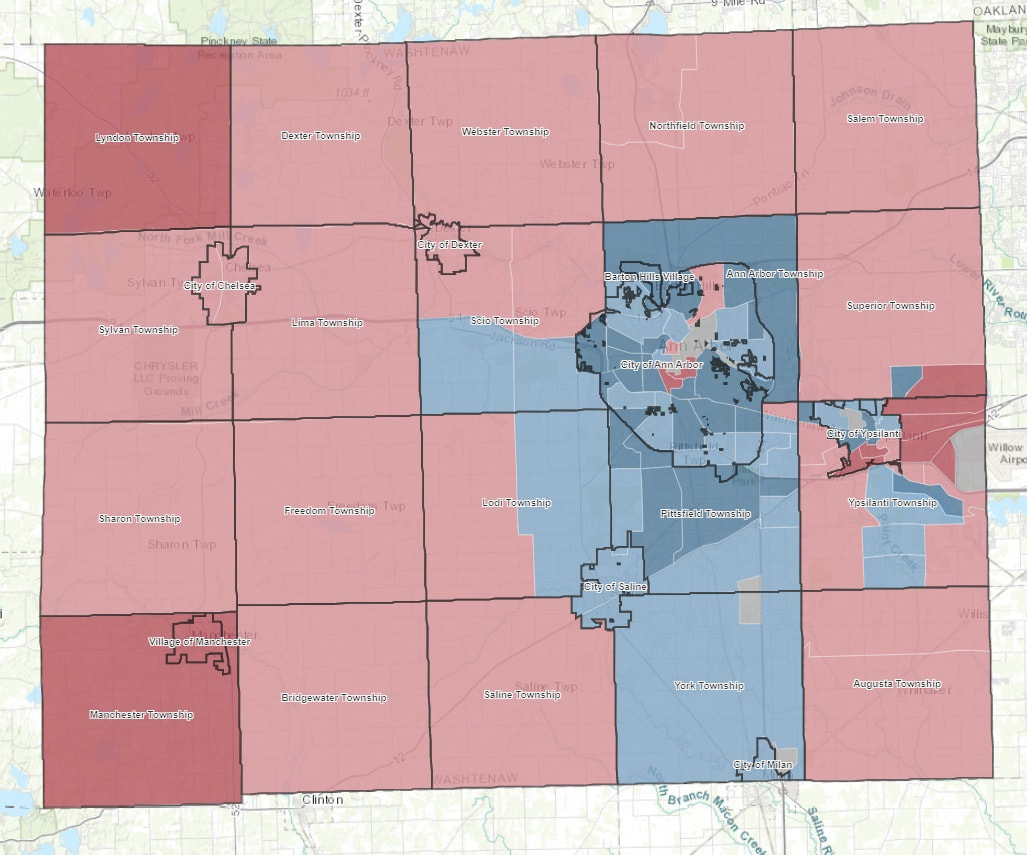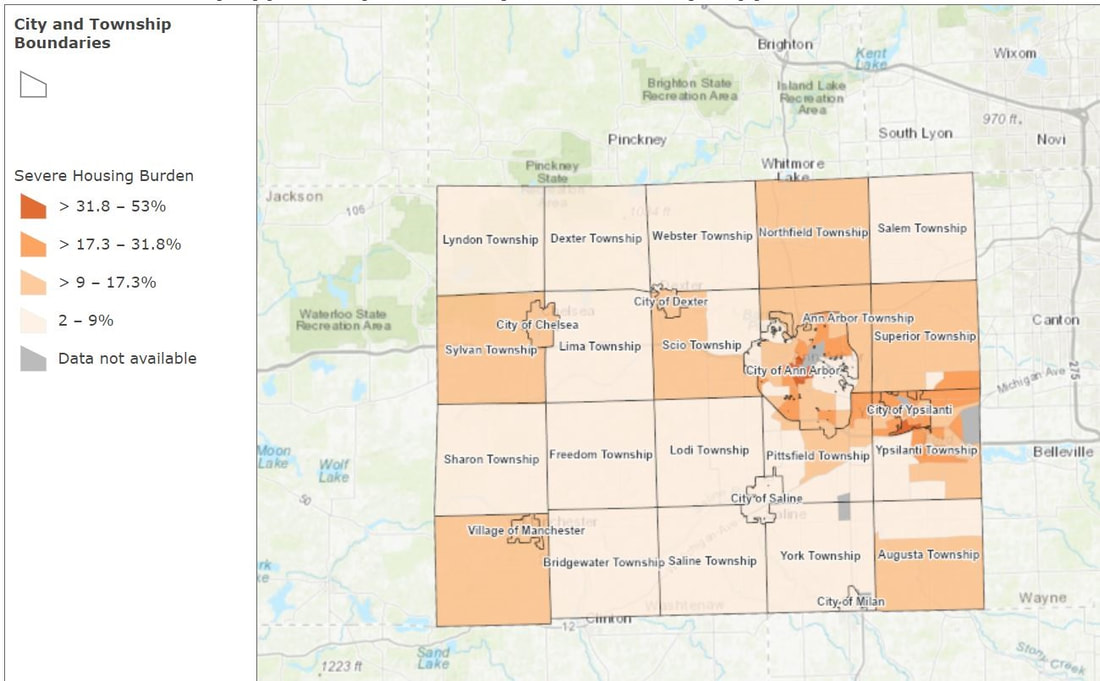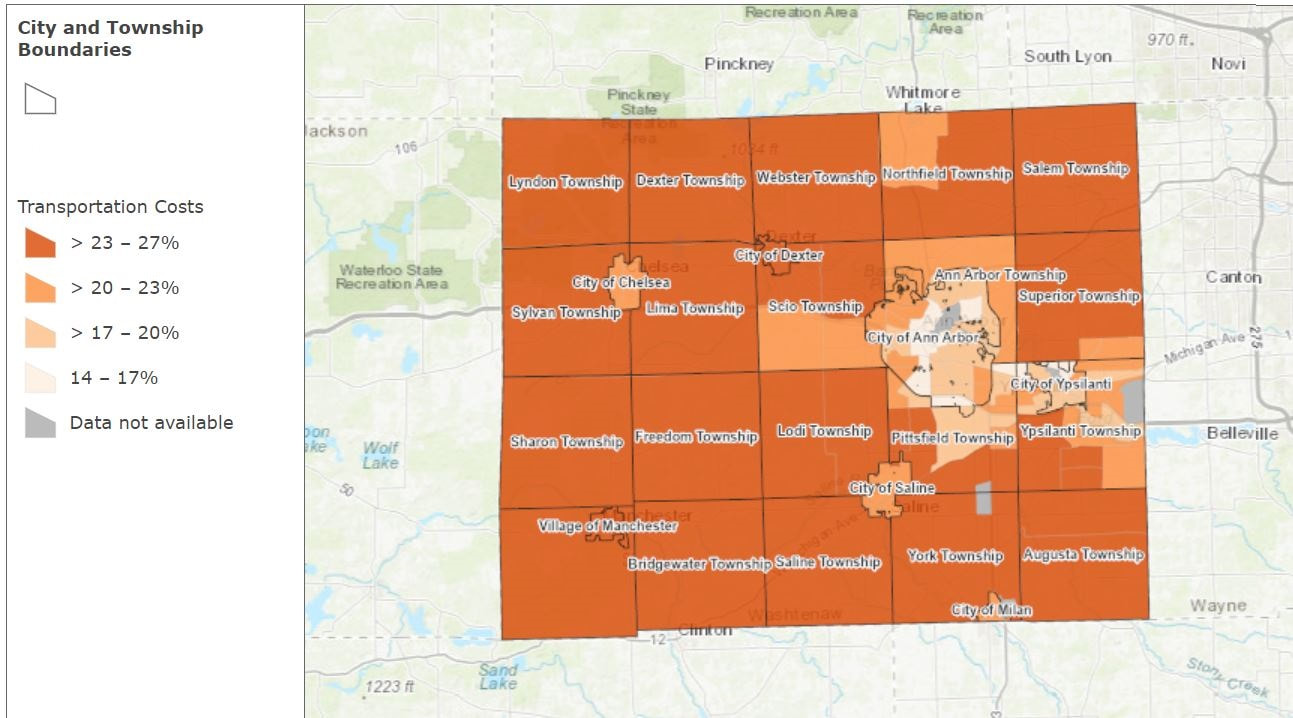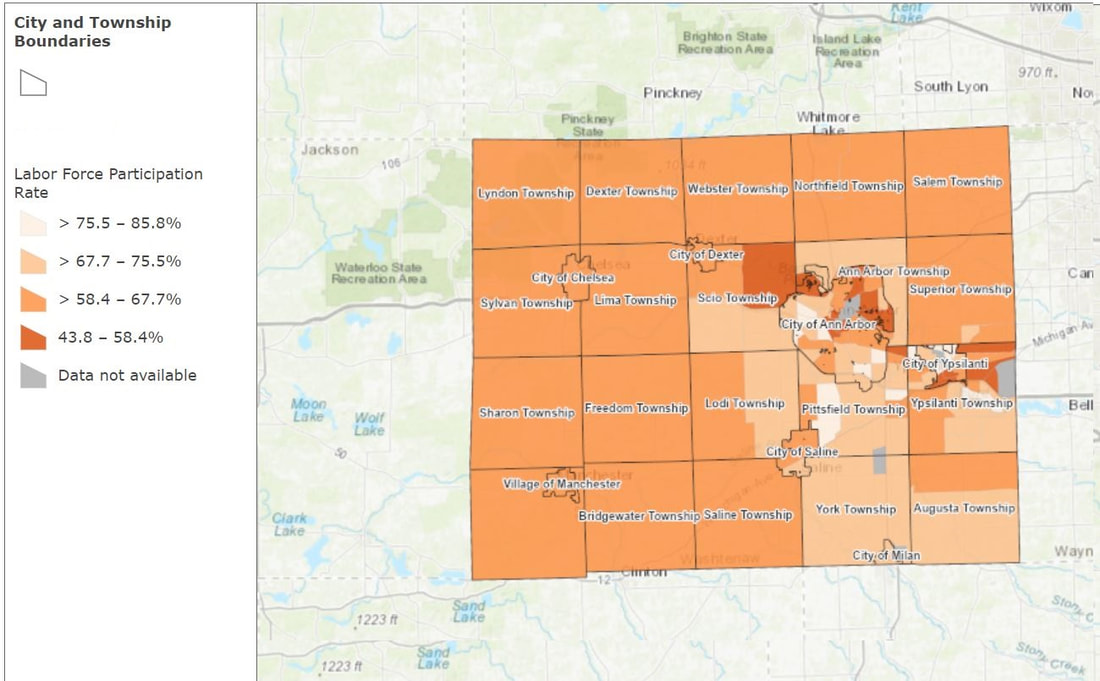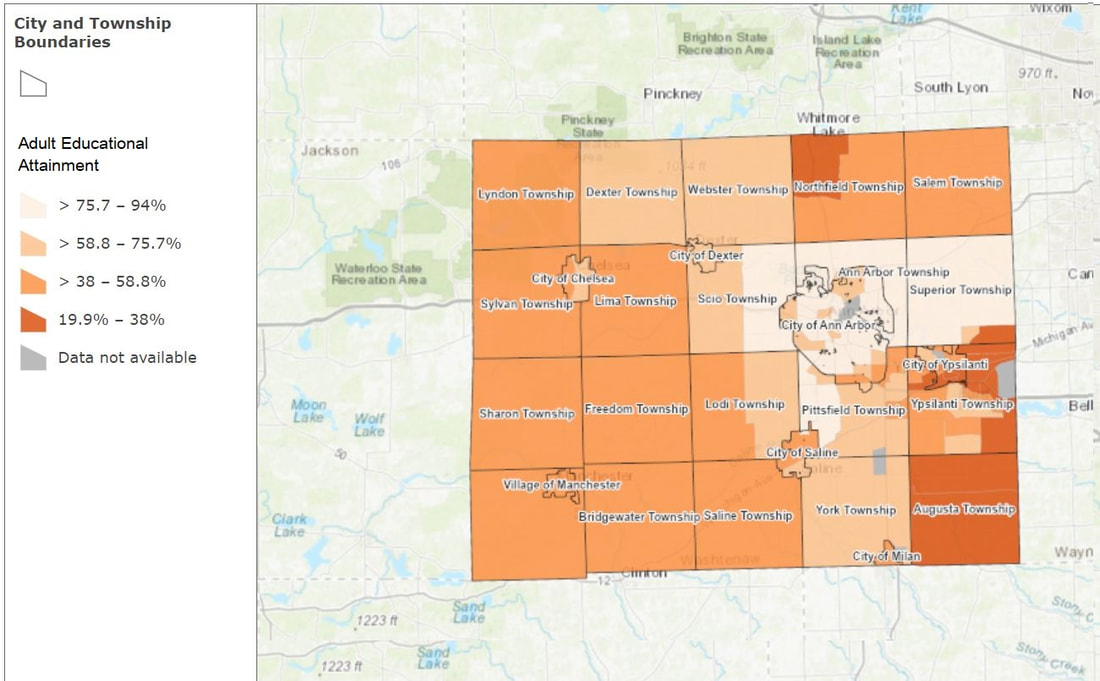Job access is two-fold. First, it is the ability to get to their place of employment. That means being able to afford housing near their job and a mode of transportation to get there. Second, it is being able to get the skills and training necessary to qualify for available jobs. Because of this, we know that jobs, housing, transportation, and education go hand-in-hand.
The Opportunity Index measures job access using four measures. These are housing burden, transportation costs, labor force participation, and adult educational attainment.
The Opportunity Index measures job access using four measures. These are housing burden, transportation costs, labor force participation, and adult educational attainment.
Housing Affordability
Housing is considered affordable when a household spends no more than 30% of their income on housing related costs. When a household pays more than 50% of their income on housing, it’s considered a severe housing burden.
Downtown Ann Arbor and the south side of Ypsilanti have the highest rates of severe housing burden. The more rural communities in our county have much lower rates of severe housing burden.
Downtown Ann Arbor and the south side of Ypsilanti have the highest rates of severe housing burden. The more rural communities in our county have much lower rates of severe housing burden.
Transportation Costs
Transportation has a large impact on an individual's access to jobs, education, health care, child care, and other services. A recent study of job seekers in Southeast Michigan indicated that the No. 1 need for job seekers to find or keep a job is reliable transportation.
Housing and transportation costs are closely related. Living in a walkable, urban community can often mean spending more on housing but less on gas or bus fare. This is compared to living far from those areas, which can mean cheaper housing, but more costly transportation. An example of this is residents in the rural townships of Washtenaw County having low housing burden, but the highest transportation costs. Together, housing and transportation should not exceed 45% of gross household income to be considered affordable.
Housing and transportation costs are closely related. Living in a walkable, urban community can often mean spending more on housing but less on gas or bus fare. This is compared to living far from those areas, which can mean cheaper housing, but more costly transportation. An example of this is residents in the rural townships of Washtenaw County having low housing burden, but the highest transportation costs. Together, housing and transportation should not exceed 45% of gross household income to be considered affordable.
Labor Force Participation Rate
Labor force participation rate refers to the number of adults who are currently employed or actively looking for a job.
This is a more comprehensive way of looking at a job market than the unemployment rate. This is because the unemployment rate does not count unemployed people who have given up looking for work altogether.
This is a more comprehensive way of looking at a job market than the unemployment rate. This is because the unemployment rate does not count unemployed people who have given up looking for work altogether.
Adult Educational Attainment
Adult educational attainment refers to the percentage of adults with at least an associate degree. Due to a shifting economy, jobs with more upward mobility often require more than a high school degree. That wasn’t the case 20 years ago.
As seen in the map, the east side of Washtenaw County has the lowest rates of adult educational attainment. The highest rates are found in and around the City of Ann Arbor.
As seen in the map, the east side of Washtenaw County has the lowest rates of adult educational attainment. The highest rates are found in and around the City of Ann Arbor.
Proudly powered by Weebly
